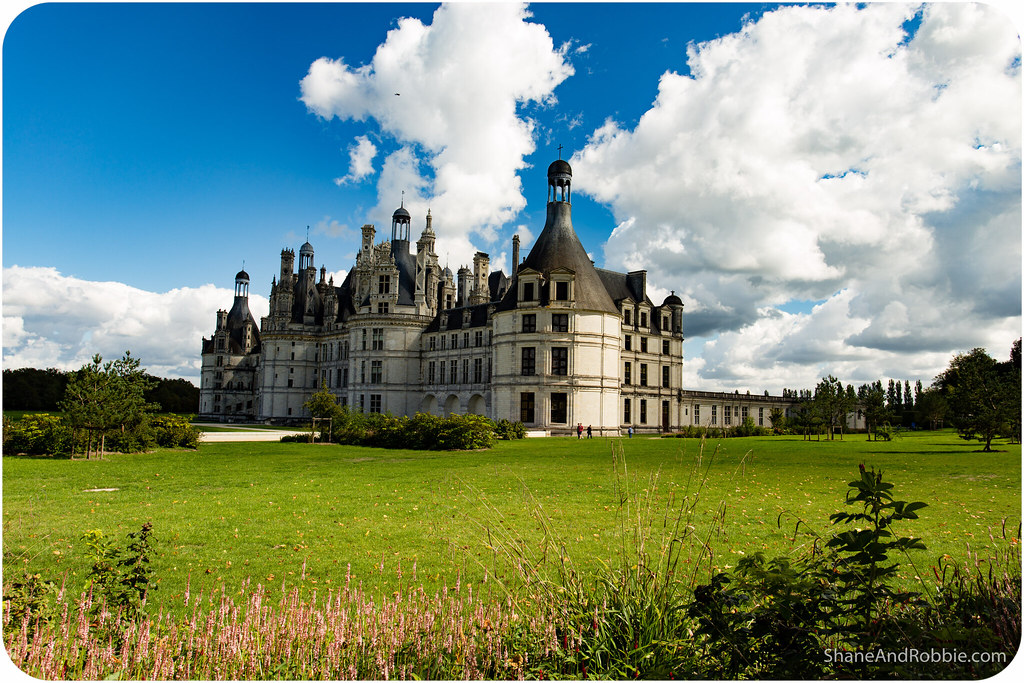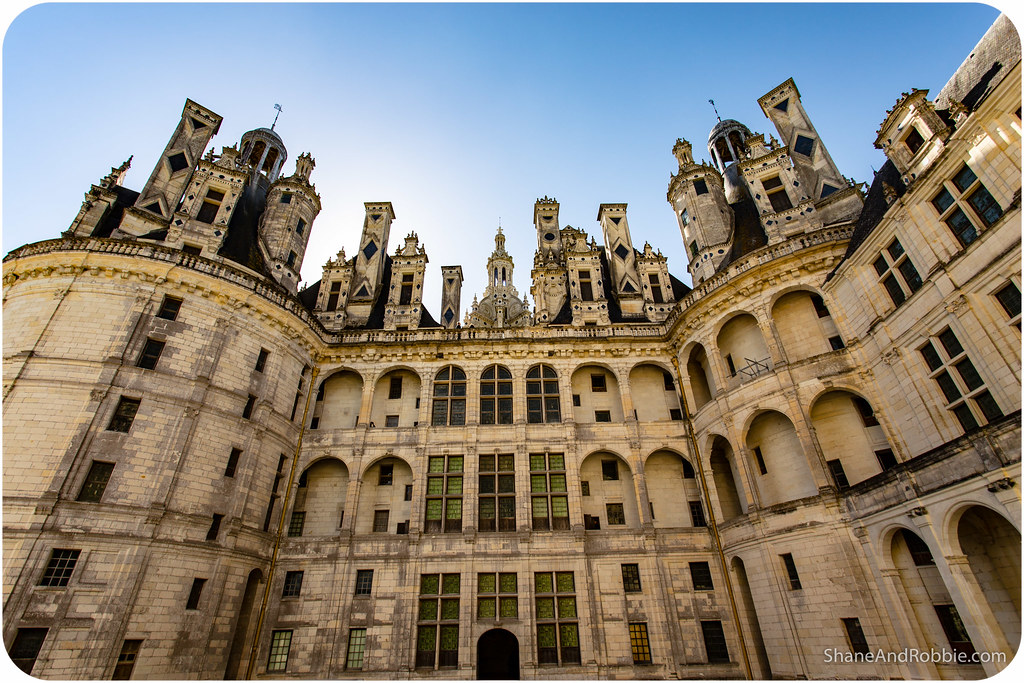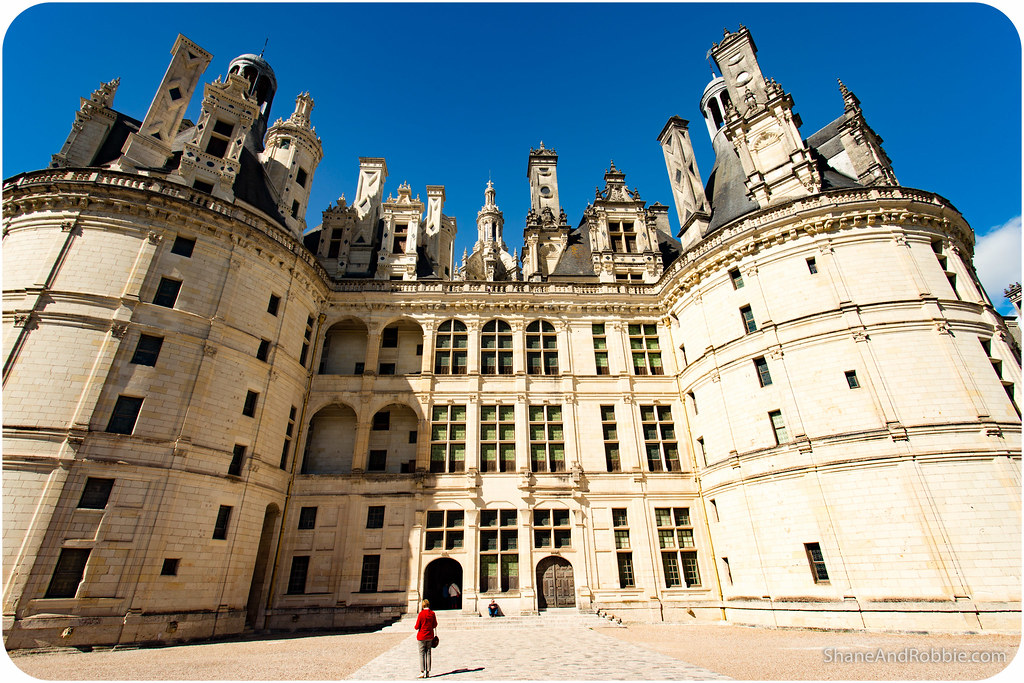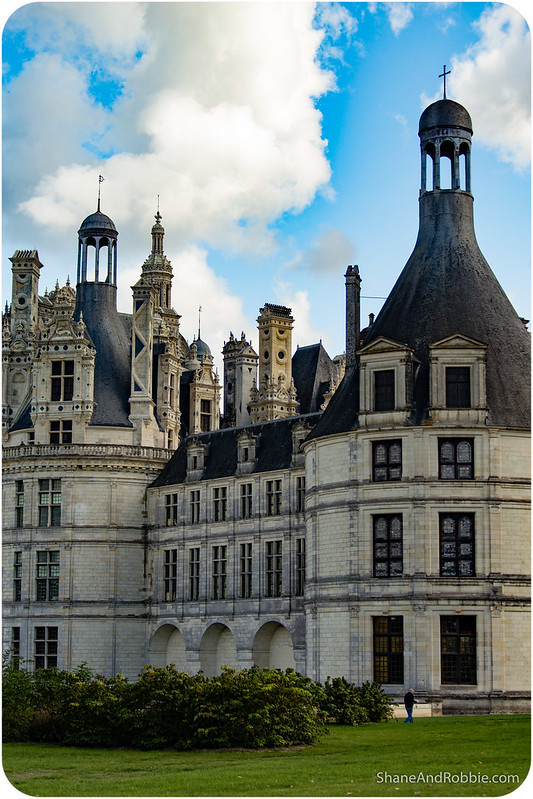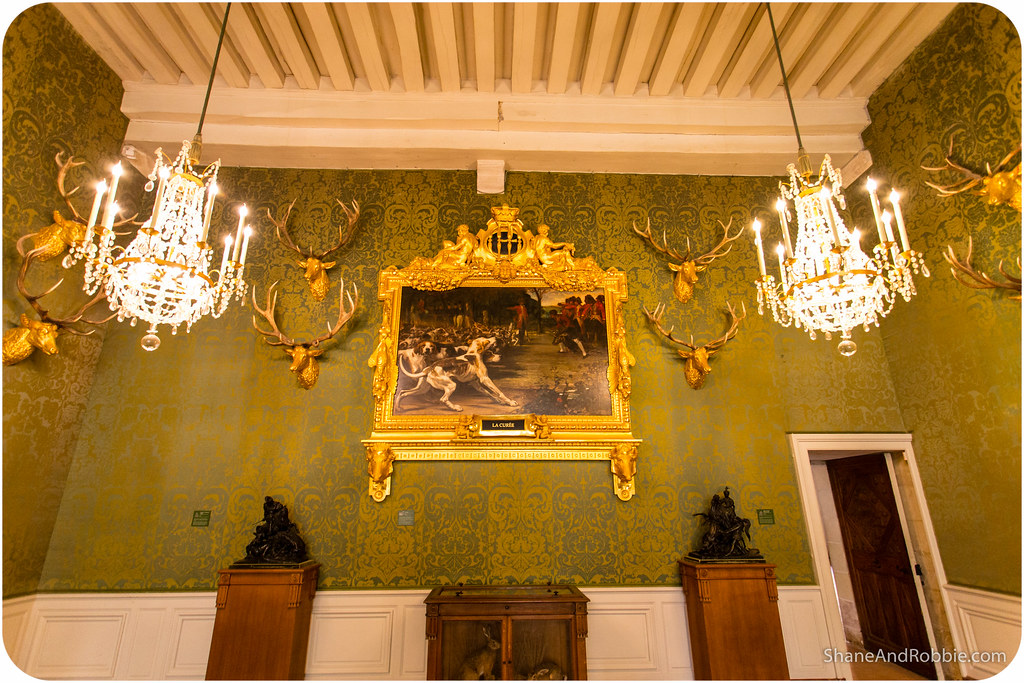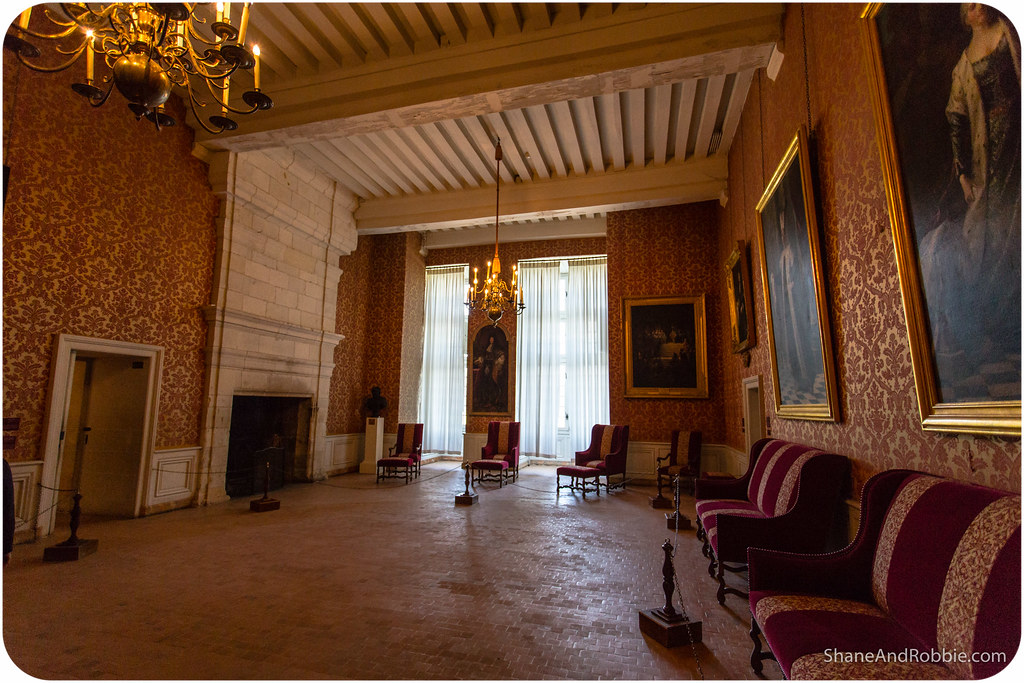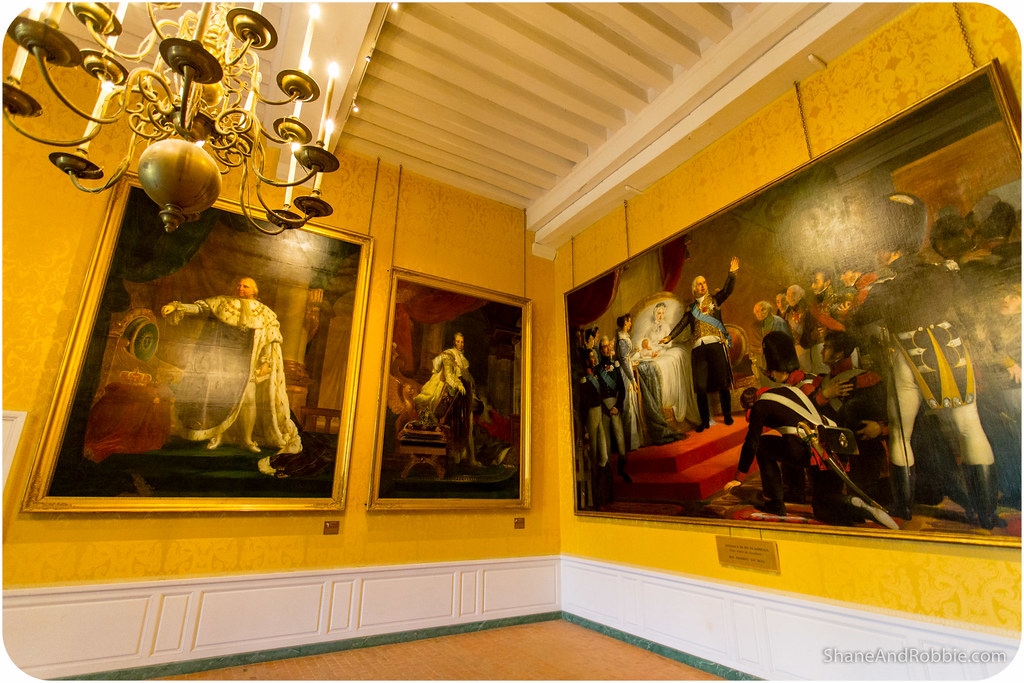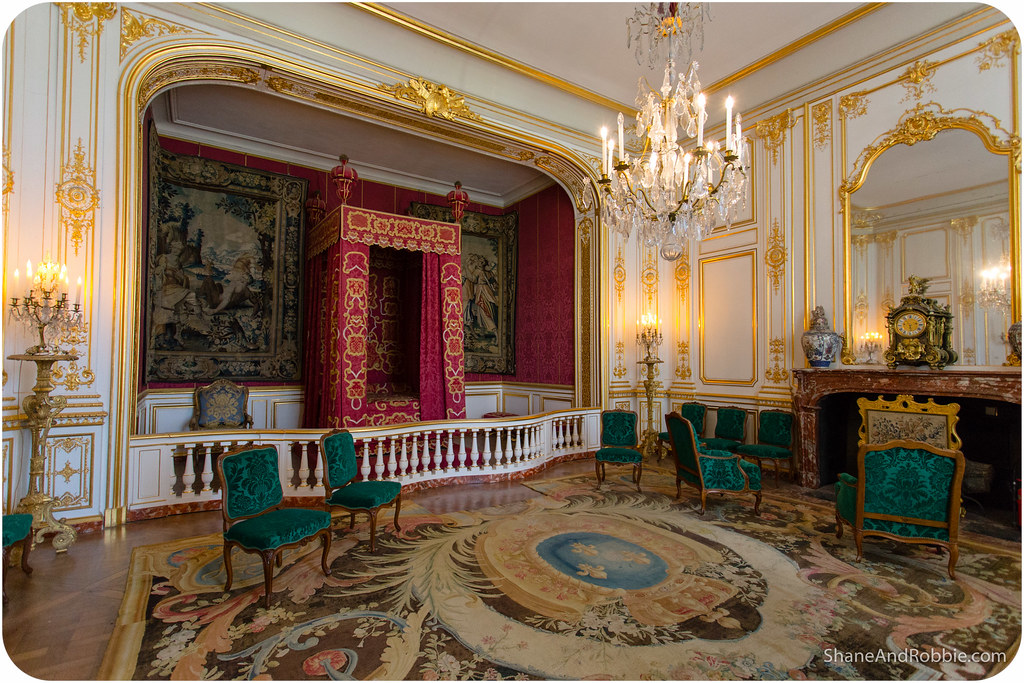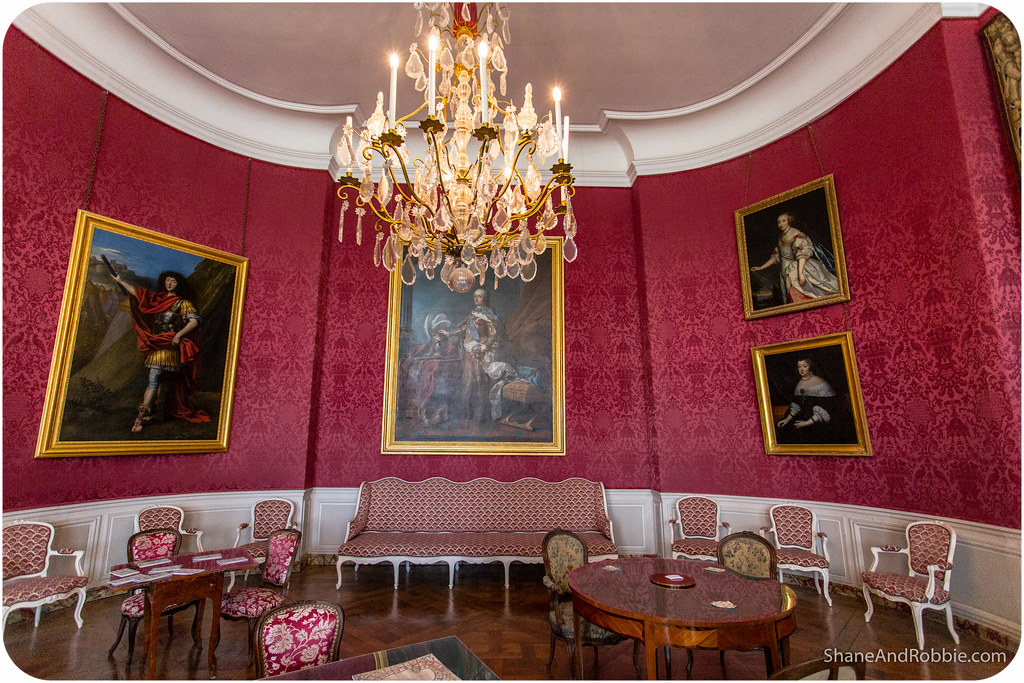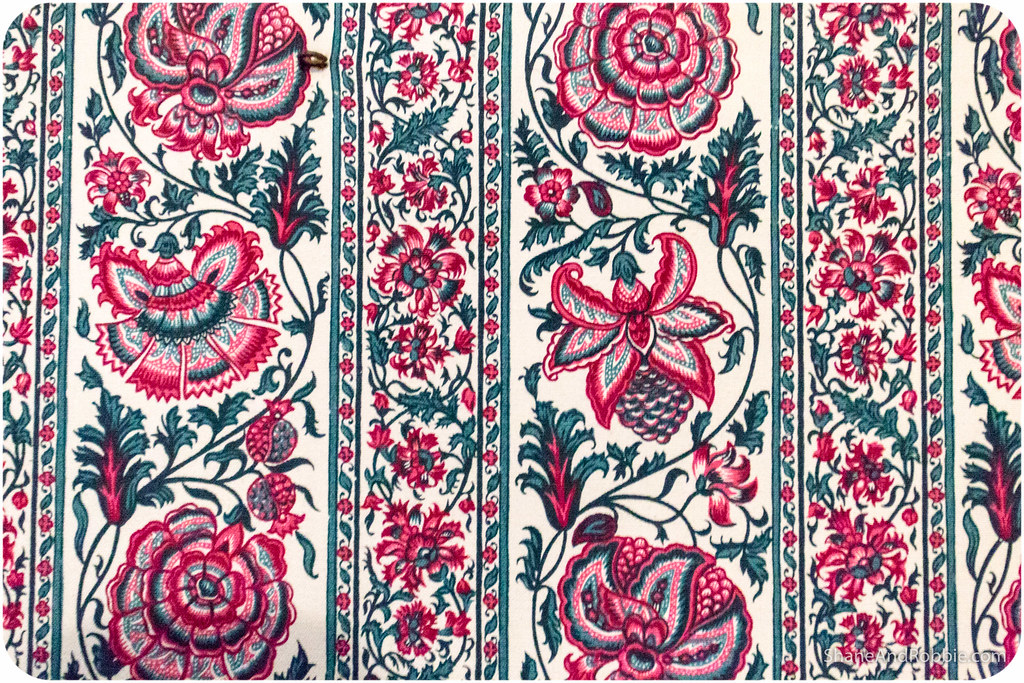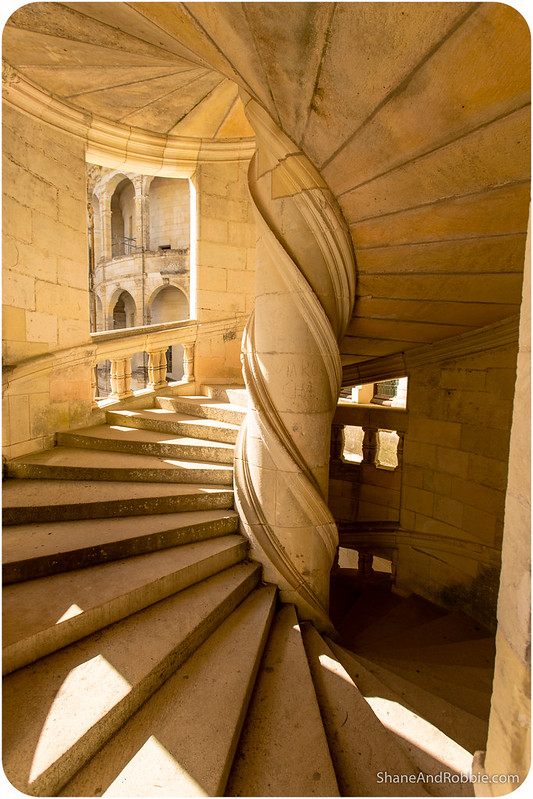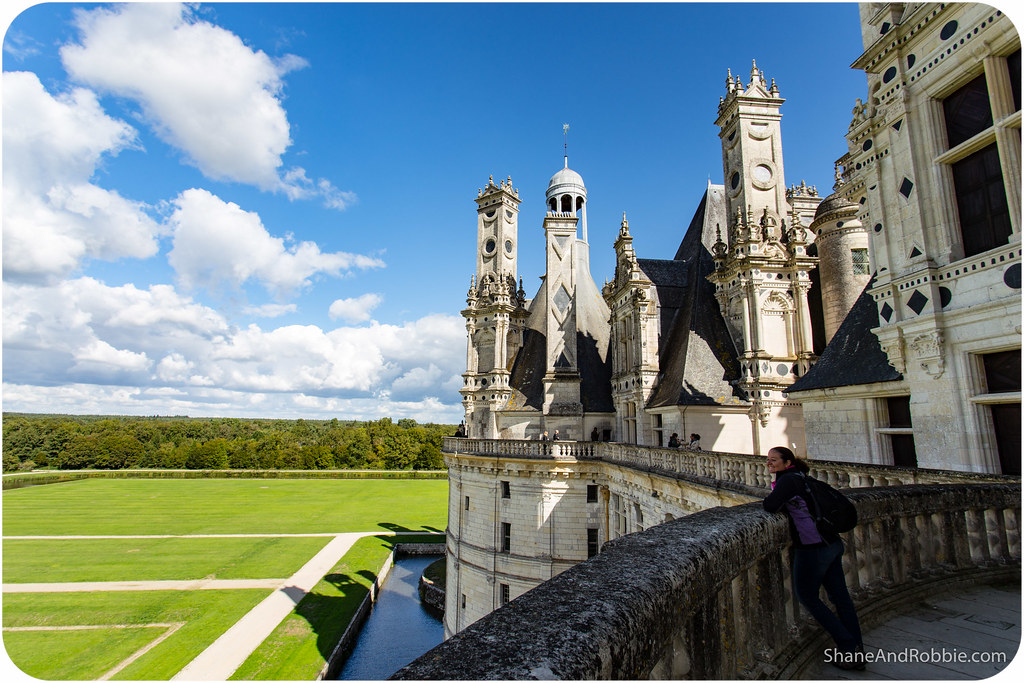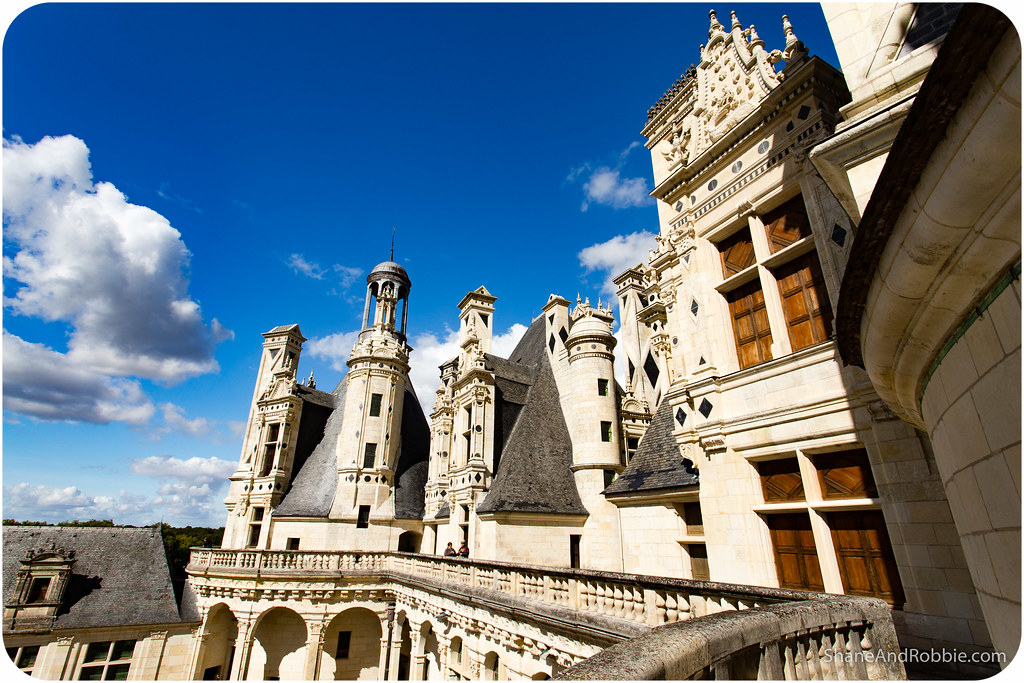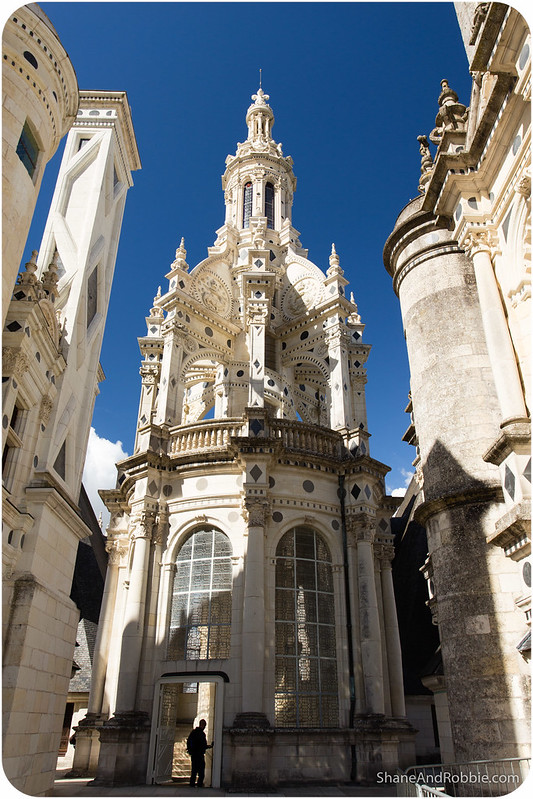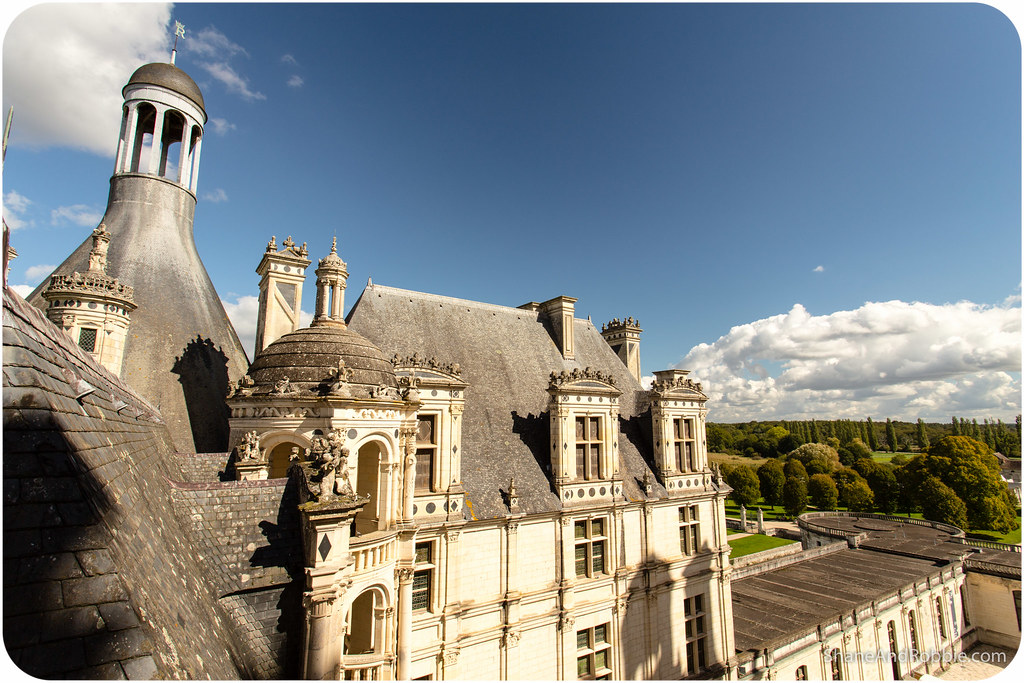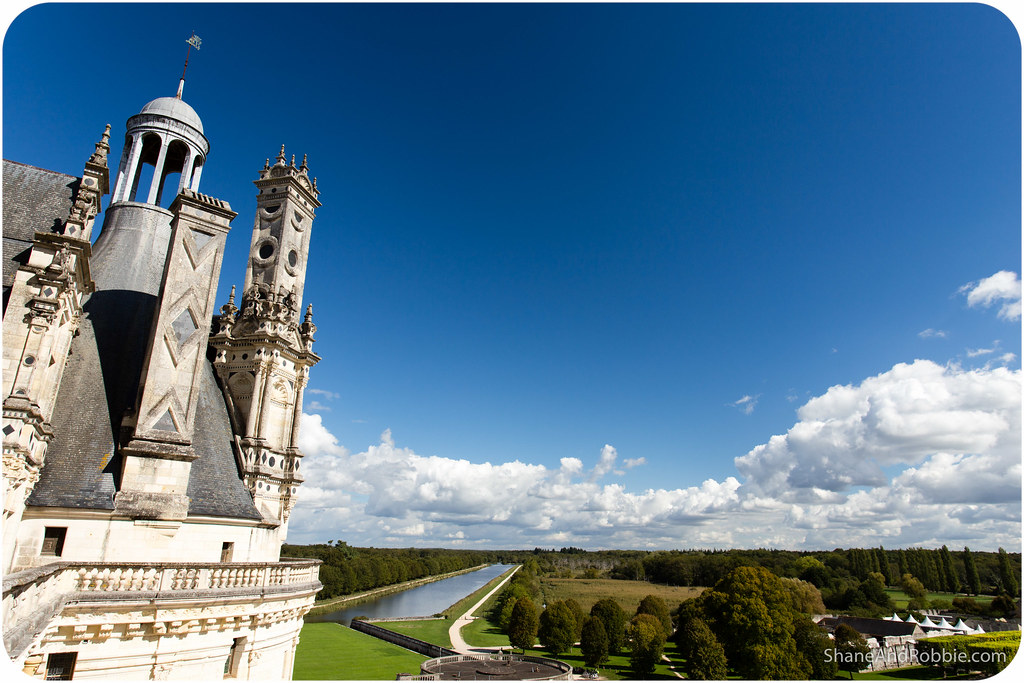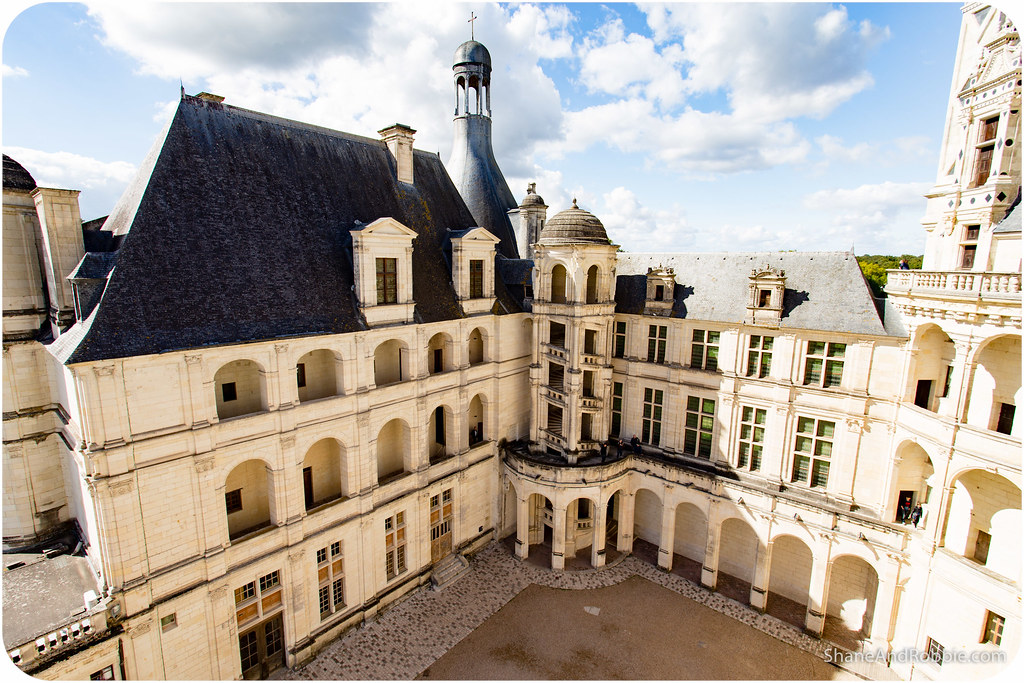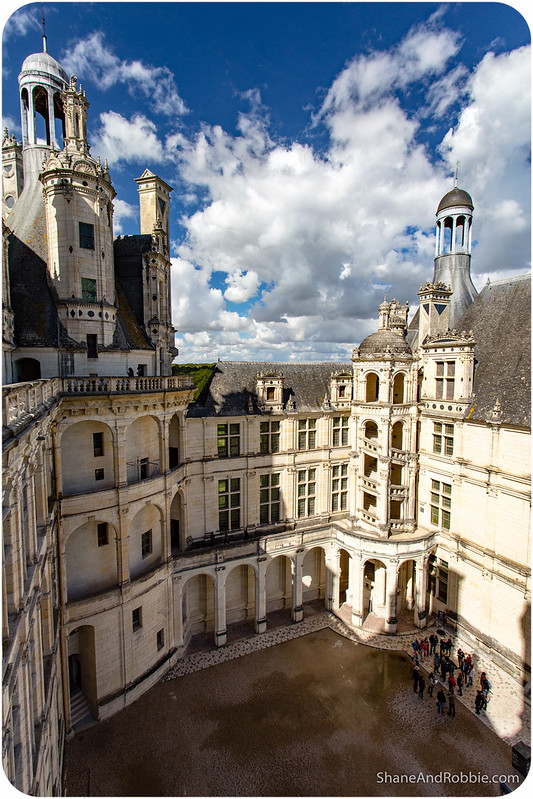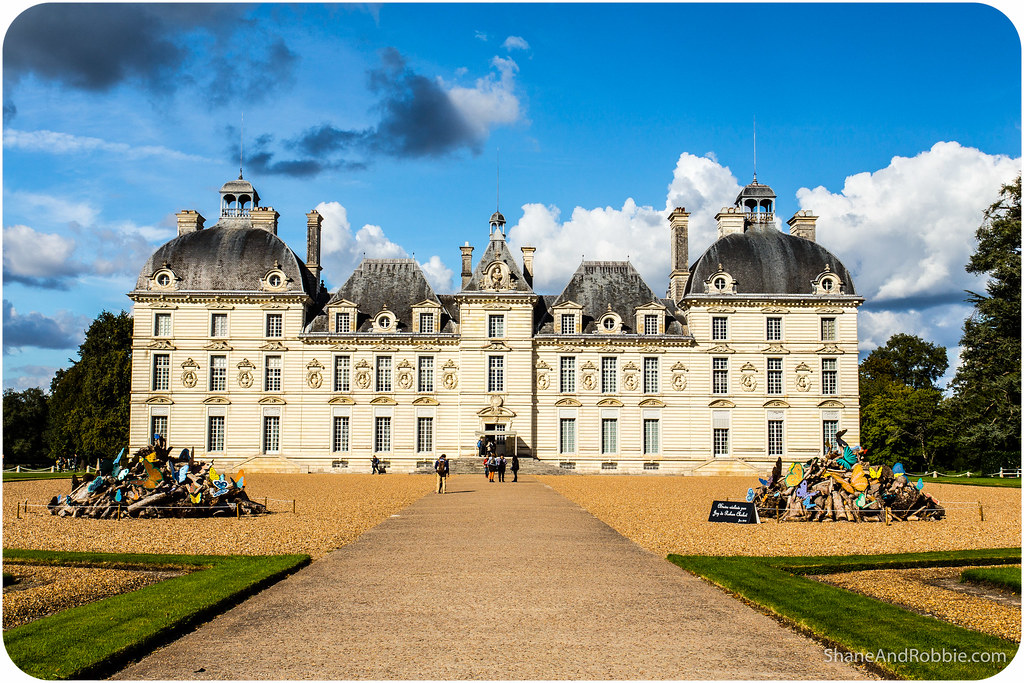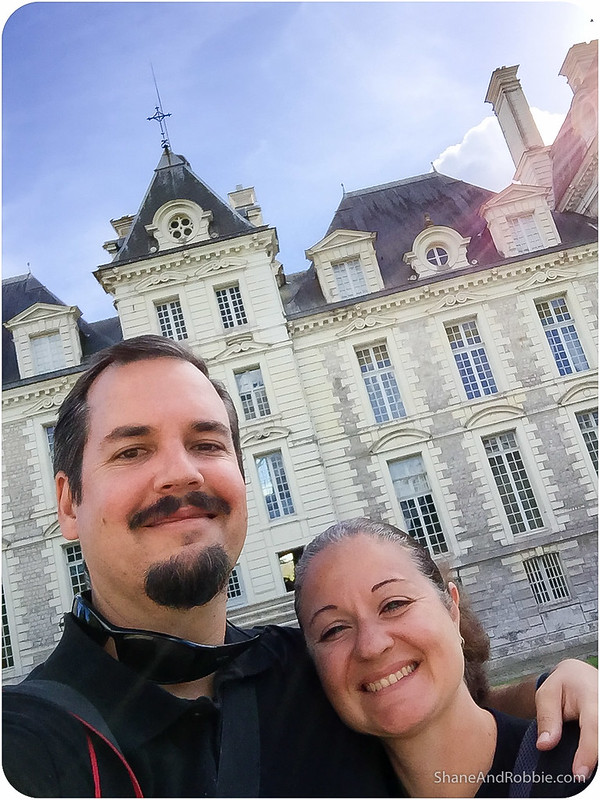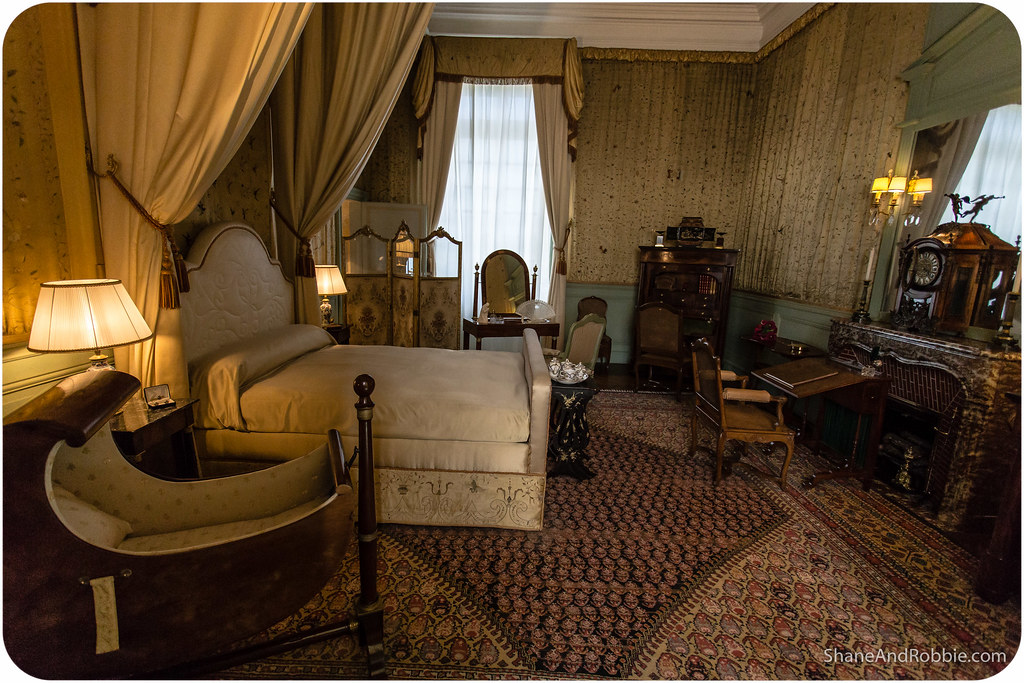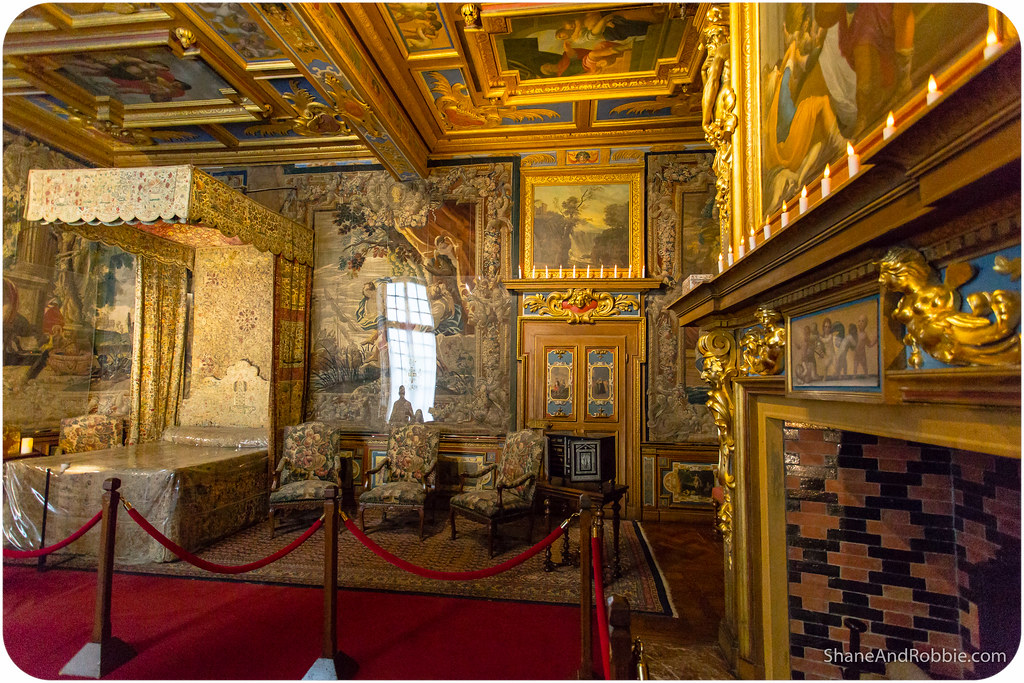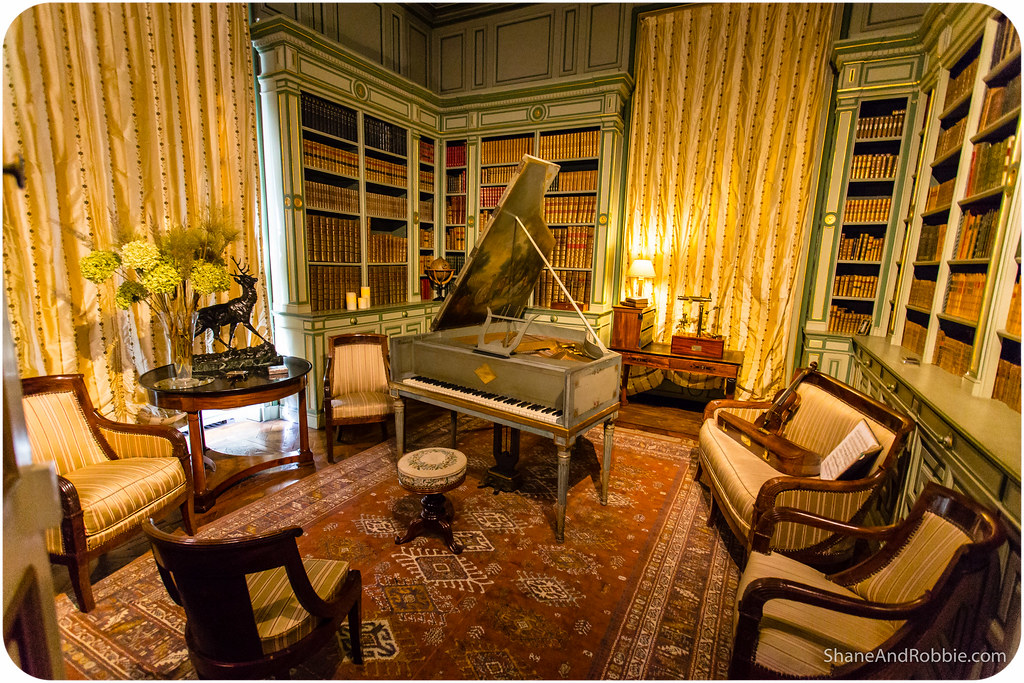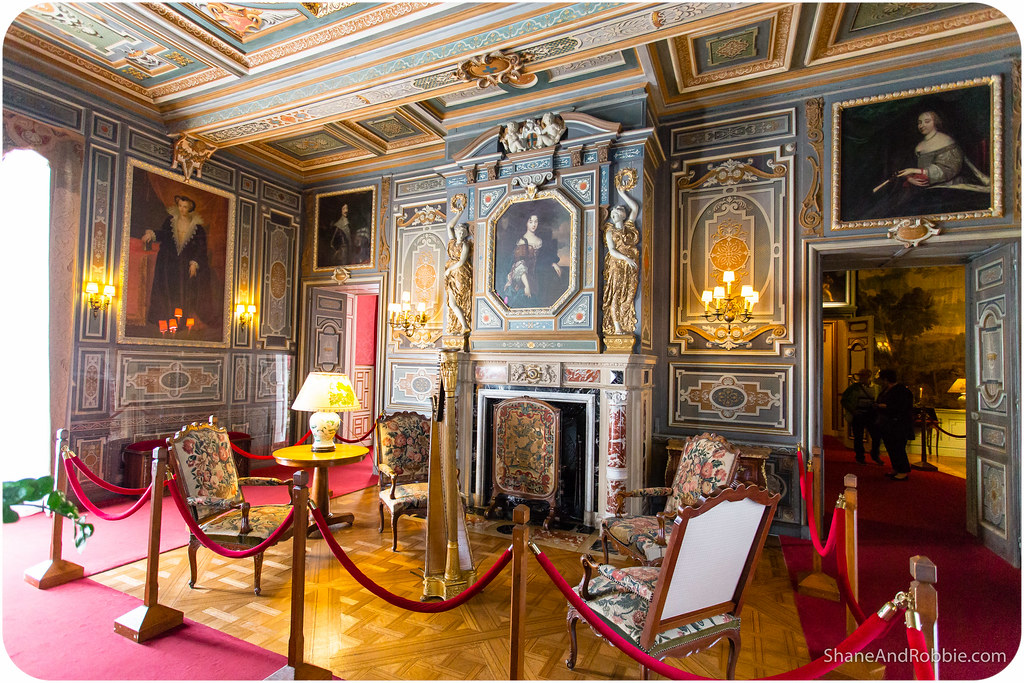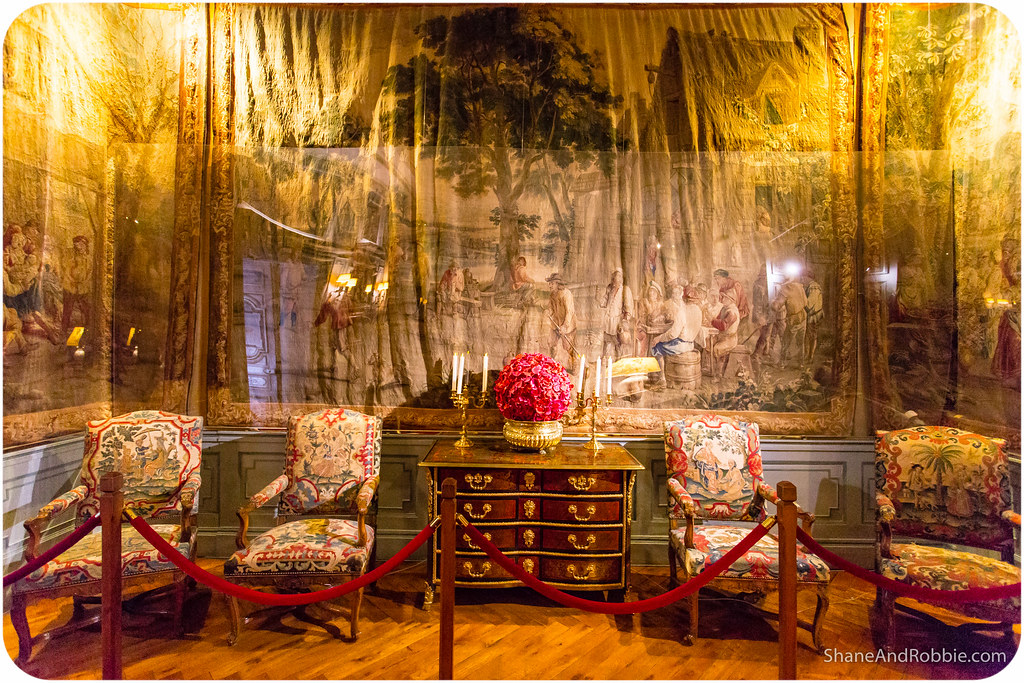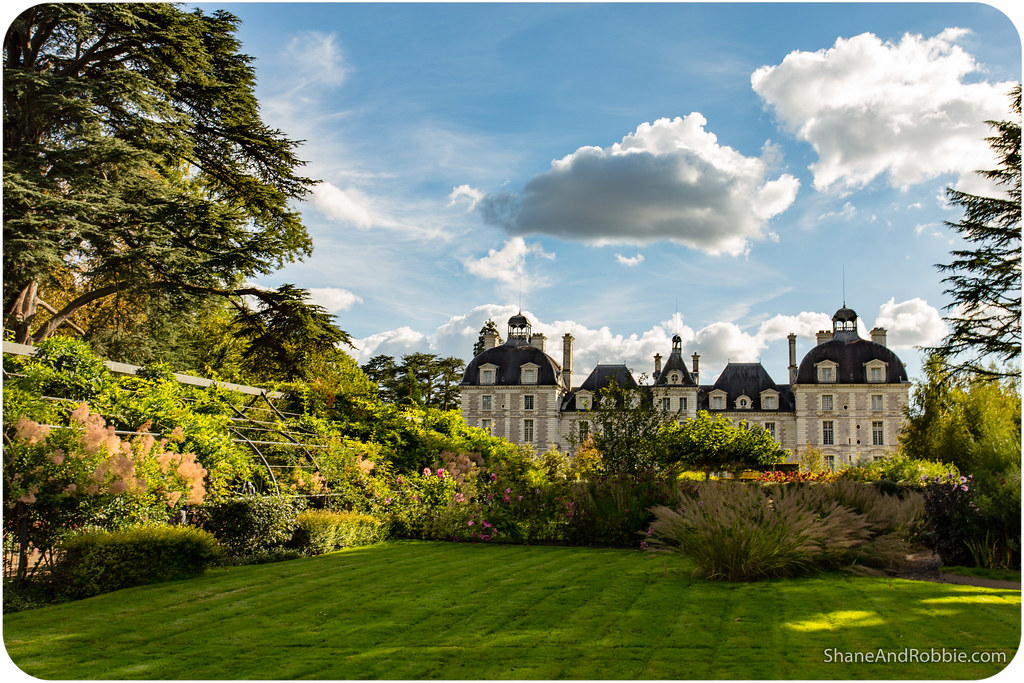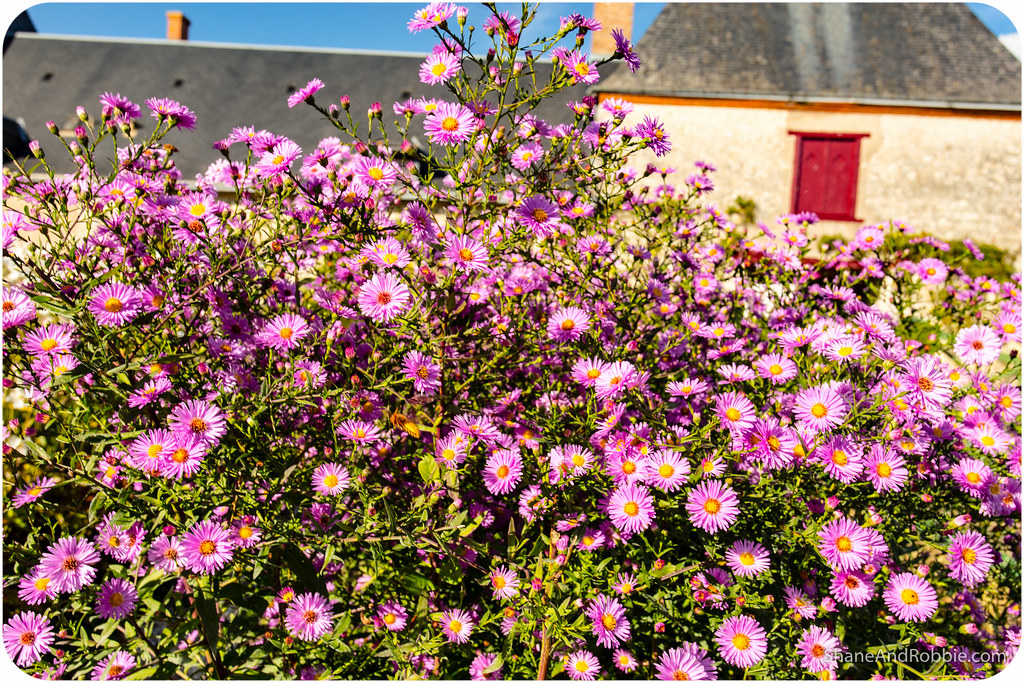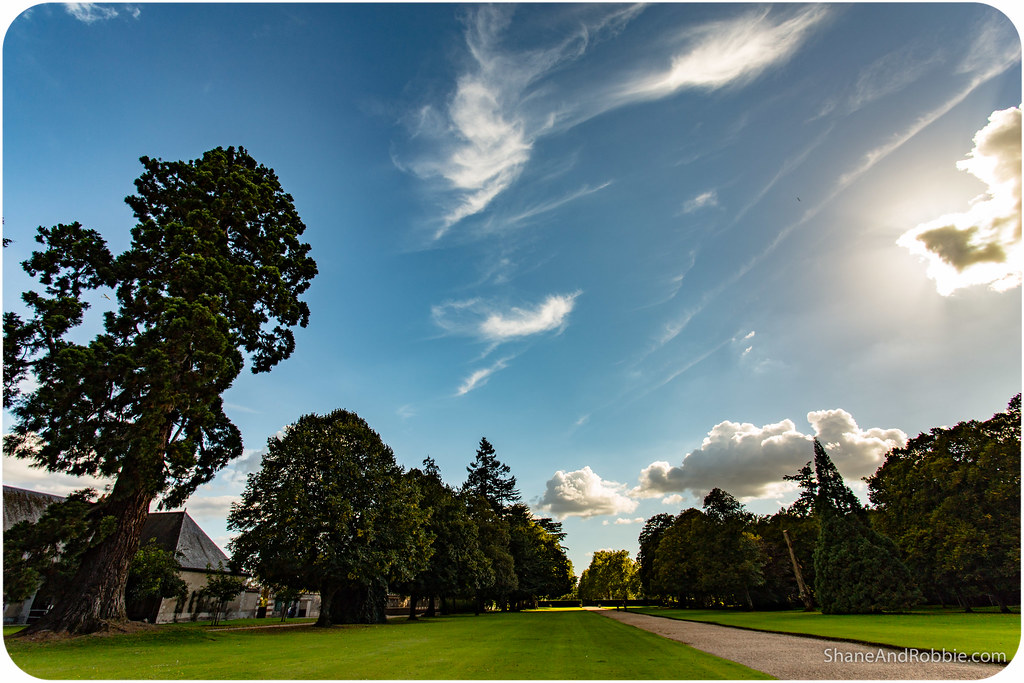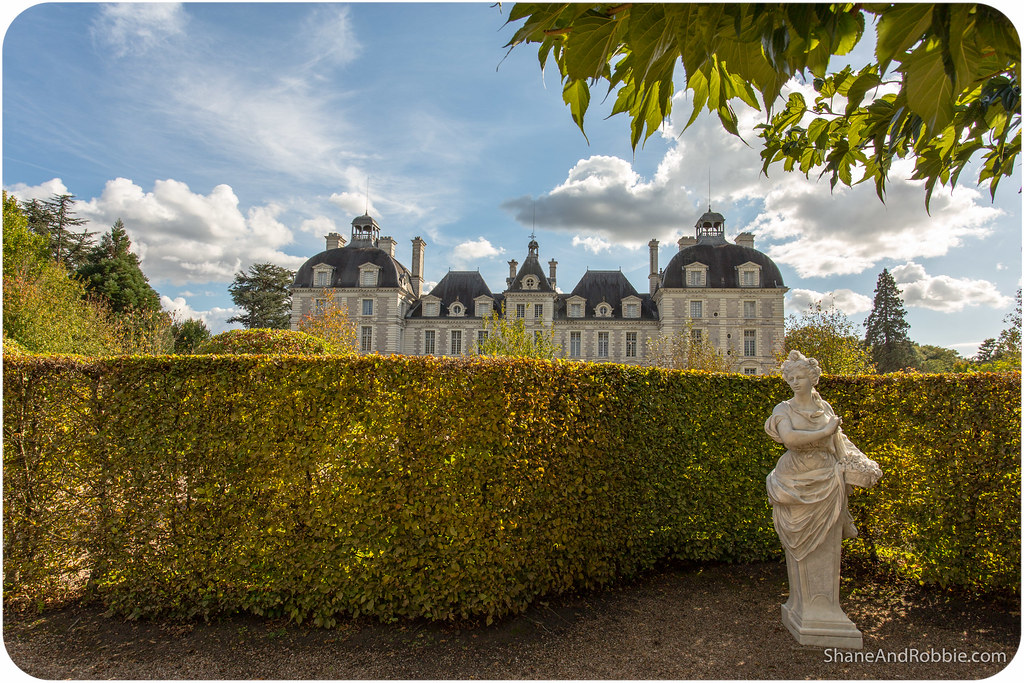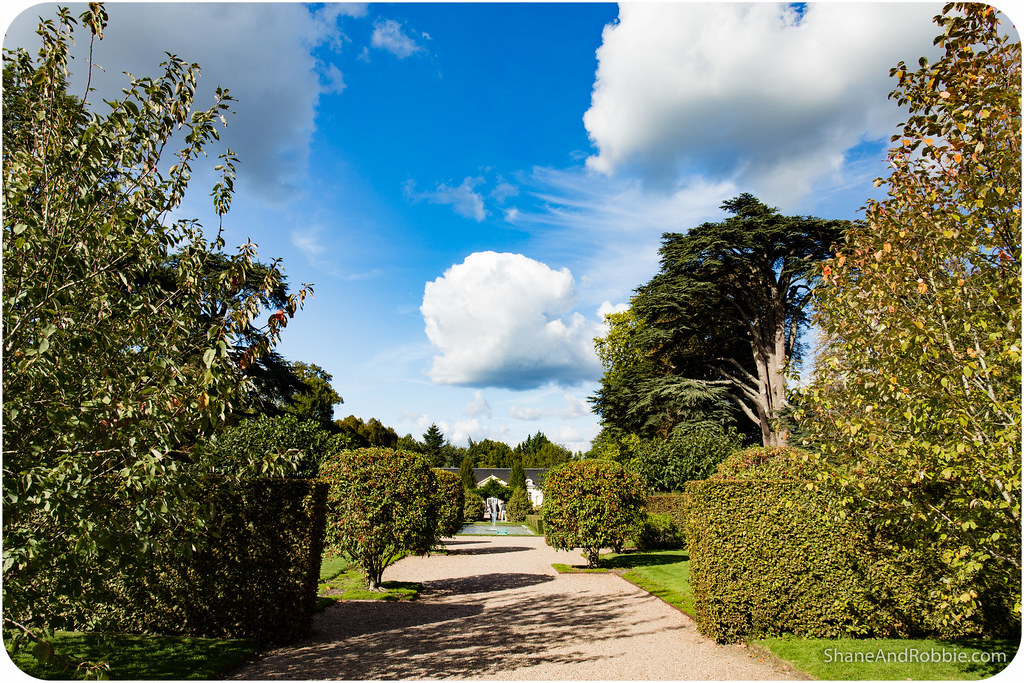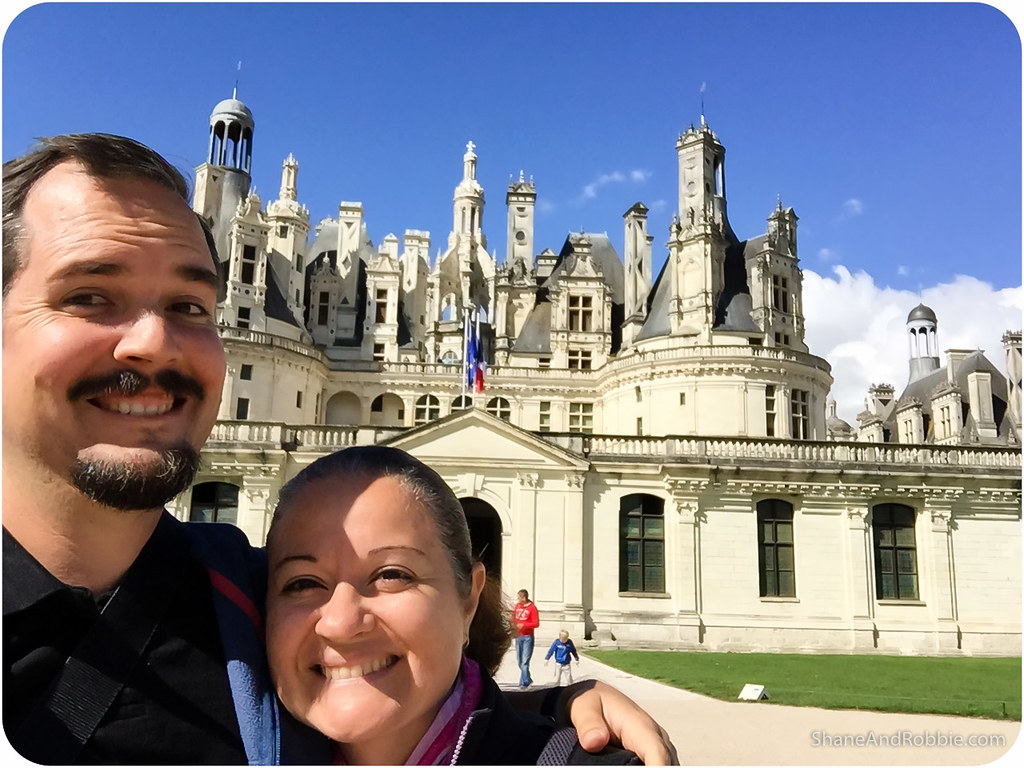CHÂTEAUX OF THE LOIRE VALLEY – PART II
When King Francois I moved his court to Paris in the late 1500s the Loire Valley was no longer the centre of French power. However, most of the French nobles still liked to spend time in the Loire due to its pleasant climate, bountiful food, good wine, and clean air. The valley became THE place to spend the summer, or to have a hunting lodge, and ALL the wealthy bourgeoisie (or at least anyone IMPORTANT) had a château in the Loire Valley. Foremost amongst these was the king himself, of course. A number of the castles in the Loire were once royal châteaux, including the monumental Château de Chambord, which we visited today.
The royal Château de Chambord is the largest château in the Loire Valley. The sheer size of this castle took us by surprise as we walked up to it this morning. It’s just HUGE!
It was built to serve as a hunting lodge for King Francois I, but the king spent just 7 weeks there in total. As the château had been constructed with the purpose of short stays, it was not practical to live in on a longer-term basis. The massive rooms, open windows and high ceilings meant heating the immense structure was difficult and expensive. Similarly, as the château was not surrounded by a village or estate, there was no immediate source of food. This meant that all food had to be brought with the arriving royal party – no mean feat considering this typically numbered up to 2,000 people at a time.
After King Francois I died of a heart attack in 1547, the château was not used for almost a century. King Louis XIV had the great keep restored and furnished the royal apartments. He also added a 1,200-horse stable, enabling him to use the château as a hunting lodge and a place to entertain a few weeks each year. After that, however, the colossal château sat empty for many years.
Following the French Revolution the castle became the property of the French state and many of the its furnishings, wall hangings, and even its wood panelling were removed and sold. This left the castle in a sorry state of disrepair that, to a certain extent, still persists to this day. Many of the rooms we visited were virtually empty, with dust accumulating in the corners and cobwebs in the cornices. It must be an almost impossible task to maintain such a large edifice, even with the revenue garnered from the 750,000 people who visit Chambord every year.
Unsurprisingly not all the rooms of Chambord are open for visiting, and only a select few of the ones that ARE open have been renovated and decorated in the lavish style that the king would have once expected.
The massive château is composed of a central keep with 4 immense bastion towers at the corners. Four rectangular vaulted hallways on each floor form a cross-shape, linking the 4 towers to the central keep. Within its walls there are 440 rooms, 282 fireplaces, and 84 staircases. The ceilings across the entire structure are 5-6m high, and the rooms immense; all of which combined to make us feel very, very small. This was, no doubt, the intended purpose – to instil awe and wonder in visitors to the palace, ensuring they understood how very wealthy and powerful the King of France was!
One of the architectural highlights of the building is the central double helix staircase that is believed to have been designed by Leonardo de Vinci. The two helices of the staircase ascend 3 floors without ever meeting, which is really cool.
Climbing da Vinci’s staircase all the way to the top, we got to walk around the rooftop and admire the unique roofscape of Chambord. There were dozens of spires, turrets, and chimneys, and everywhere there were salamanders.
The salamander was King Francois I’s personal emblem – which is why there are more than 800 of them carved into the stones of Chambord. Supposedly he chose the salamander as totemic animal as at the time it was (erroneously) believed that the salamander had the ability to live in fire without being consumed and to extinguish flames with the coldness of their bodies. The emblem was, therefore, said to describe a king nourished by the “good fire” of faith and love, who strived to extinguish the “bad fire” of injustice and greed.
The views from the rooftop across the surrounding landscape were pretty amazing as well. The château is surrounded by a 13,000 acre wooded park and game reserve maintained with red deer, enclosed by a 32km long wall.
On the grounds there is also a small chapel, once used by the king and his retinue for prayer before they set out on a great hunt, or giving thanks after a successful outing.
We spent hours at Château de Chambord, losing ourselves in its huge rooms, expansive hallways, and vast grounds. Along the way we found out that in 1939, shortly before the outbreak of World War II, the art collections of the Louvre and Compiègne museums (including the Mona Lisa and Venus de Milo) were stored at the Château de Chambord. And apparently Chambord was the inspiration for the Beast’s castle in the 1991 animated Disney film “Beauty and the Beast”.
There’s no doubt that Château de Chambord is an amazing castle – a monolithic, gargantuan structure designed to amaze and intimidate. It’s also a ridiculous building that is as impractical as it is impressive! Still, it’s definitely one of a kind and well worth a visit.
Far less awe-inspiring, but far more comfortable to live in no doubt, was the second castle we visited today: Château de Cheverny.
Château de Cheverny was built in the 17th century by the Comte de Cheverny, a General in Louis XIII’s army. The castle has remained in the family ever since and the Comte’s descendant, the Marquis de Vibraye, still lives in the castle with his family*.
*The family occupies about a quarter of the castle, the rest is open to the public for visits.
The château was, in fact, the first of the Loire Valley castles to be opened to the public for visits; it has been open since 1914 and remains one of the region’s most popular châteaux.
The interior of the castle was absolutely spectacular, housing an incredible display of furniture, tapestries, and art pieces.
The drawing room featured antique musical instruments and a wonderful array of old books, whilst the King’s bedroom* boasted magnificent artwork from wall to ceiling.
*Every noble residence was expected to have a bed chamber set aside for the King, just in case he showed up for a visit. These bed chambers were, of course, also expected to be exquisite in design and richly furnished. Seems like an awful lot of expense to go to for a guest that may never show up!
Throughout the castle there were numerous stone fireplaces, beautiful canvas paintings, and a variety of furniture pieces kept in impeccable condition.
The outside grounds of the Château de Cheverny are equally beautiful as the building and interior, with impeccably manicured lawns, colourful flowerbeds, and groves of tress hundreds of years old.
With its extraordinarily symmetrical design and stark white colour, Château de Cheverny really is a stunning castle, set in beautiful grounds. We spent pretty much our whole afternoon there before deciding we had seen enough grand castles for the day.
The Loire Valley really is something quite unique – a beautiful natural setting, dotted with magnificent man-made structures that are so extraordinarily beautiful that they really do seem to belong in a fairy tale. Seeing the opulence and extravagance of châteaux like Chambord and Cheverney makes us realise just how very, very wealthy the French nobility were. We didn’t get to see Versailles while we were in Paris (too many people), but we can only imagine that the splendour of THAT palace would put these earlier castles to shame! It’s just incredible, but all just a bit surreal too. Seeing these castles makes us feel like we’re peering through the looking glass, into a world so far removed from our own that we could never understand how they really used to live. Still, it’s great having the chance to peer into their world, even if it’s just for a day!
Categories: France
